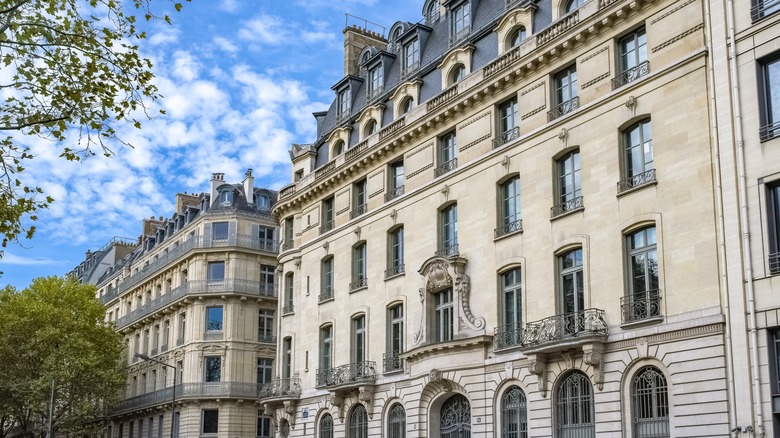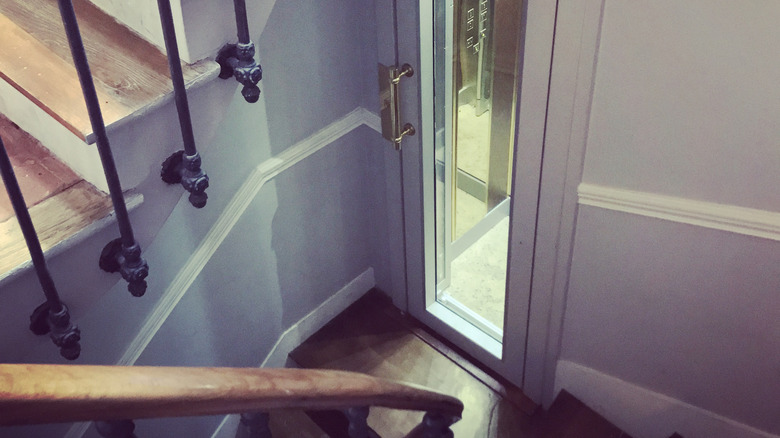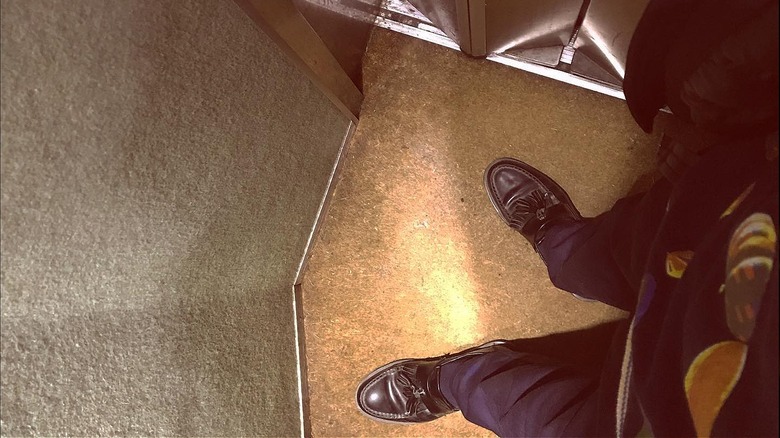The Unsettling Detail Tourists Should Know Before Using An Elevator In Paris
Many visitors come to Paris to relax with a café crème at a sidewalk café, visit the Eiffel Tower with forearmed knowledge, or enjoy an afternoon in the Musée d'Orsay. While the City of Lights is known for wonderful sights and experiences, travelers may not be prepared for another feature of Parisian life: the exceptionally small elevators. Often found in historic buildings throughout the city, these tiny lifts can measure around 20 by 21 inches, just enough room for one person. While these unusually small elevators may seem quaint and amusing, they also trigger a heightened sense of claustrophobia in many tourists. It's an important situation to consider before you take your first ride.
@itsbradneilley My thicc friend said she dont like Paris no more #stairs #fyp #foryoupage #foryou #viral #paris
What is the story behind these small elevators? The answer reveals an insight into the history of the city. The architecture in Paris can be traced to medieval times, with the oldest building dating to 1407. A transformation took place in the 19th century due to the visionary influence of Baron Georges-Eugène Haussmann in 1853. Napoleon enlisted him to modernize the rudimentary and overcrowded areas of central Paris, where the medieval infrastructure had no allowances for proper sanitation and running water. The buildings that he designed are now recognized as Haussmannian architecture. The stone façades, iron balconies, and slanted roofs with dormer windows are characteristics of the distinct style that people around the world associate with this beautiful city.
Adding modern convenience to historic architecture
Haussmannian interiors have elaborate details, such as intricate moldings and herringbone parquet floors, but an elevator was not included in the original design. At the same time that the transformation began in Paris, Elisha Otis introduced the world's first passenger elevator in 1854 at the New York World's Fair, per CNN. These "ascending rooms" were initially found only in luxurious accommodations, like penthouses and most of the romantic hotels in Paris. "They were beautifully designed rooms with upholstered seats and mirrors on the walls, sometimes even a small chandelier," says Lee Gray, a professor of architectural history at UNC Charlotte.
Many older buildings have now been retrofitted with an elevator. Due to restrictions on historic buildings, often, the only place to insert a lift is right down the center of the staircase. Far from luxurious, these tiny elevators are nonetheless a step toward modern accessibility in a city with an ancient heritage. Ironically, another detail of French history has a significant association with the invention of the elevator. Long before Otis demonstrated his innovation in New York, King Louis XV of France installed the very first elevator at the Palace at Versailles in 1745. The king's mistress, the Duchess of Châteauroux, asked for a sliding chair to be built to save her the effort of climbing the stairs. Using a system of weights and pulleys, she could travel between floors and visit the king's bedchamber discreetly.
Triggering a sense of claustrophobia
In contrast with the sliding chair at Versailles, the modern Parisian elevator does not have room for furniture. In fact, it barely has room for more than one person. If your party has any luggage, it may be necessary to transport one passenger at a time. It might be useful to consider these lifts as freight elevators, where you can place your bags inside the doors and position another person upstairs to receive them.
Anyone with an inclination toward claustrophobia should give serious thought as to whether a tiny Parisian elevator is the right mode of transportation, of course. According to Psychiatrist Frederic Neuman, M.D., a person with a fear of elevators is often terrified of having a panic attack while trapped inside a space. This fear may be compounded by the fact that these elevators may often break down, leaving the passenger stranded in a tiny space for a prolonged period.
This is the type of challenge that tourists will face while visiting Paris, but these small elevators represent a connection with the city's history and medieval heritage. It's this kind of quirky inconvenience that becomes part of the city's charm, and it gives a glimpse into what it's like to live here and experience Paris like a Parisian. The more often you encounter the unique ways modern-day Paris is linked to her historic past, the more memorable your experience will become.


